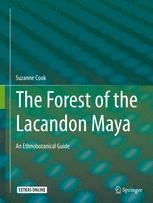

Most ebook files are in PDF format, so you can easily read them using various software such as Foxit Reader or directly on the Google Chrome browser.
Some ebook files are released by publishers in other formats such as .awz, .mobi, .epub, .fb2, etc. You may need to install specific software to read these formats on mobile/PC, such as Calibre.
Please read the tutorial at this link: https://ebookbell.com/faq
We offer FREE conversion to the popular formats you request; however, this may take some time. Therefore, right after payment, please email us, and we will try to provide the service as quickly as possible.
For some exceptional file formats or broken links (if any), please refrain from opening any disputes. Instead, email us first, and we will try to assist within a maximum of 6 hours.
EbookBell Team

0.0
0 reviewsThe Forest of the Lacandon Maya: An Ethnobotanical Guide, with active links to audio-video recordings, serves as a comprehensive guide to the botanical heritage of the northern Lacandones. Numbering fewer than 300 men, women, and children, this community is the most culturally conservative of the Mayan groups. Protected by their hostile environment, over many centuries they maintain autonomy from the outside forces of church and state, while they continue to draw on the forest for spiritual inspiration and sustenance.
In The Forest of the Lacandon Maya: An Ethnobotanical Guide, linguist Suzanne Cook presents a bilingual Lacandon-English ethnobotanical guide to more than 450 plants in a tripartite organization: a botanical inventory in which main entries are headed by Lacandon names followed by common English and botanical names, and which includes plant descriptions and uses; an ethnographic inventory, which expands the descriptions given in the botanical inventory, providing the socio-historical, dietary, mythological, and spiritual significance of most plants; and chapters that discuss the relevant cultural applications of the plants in more detail provide a description of the area’s geography, and give an ethnographic overview of the Lacandones. Active links throughout the text to original audio-video recordings demonstrate the use and preparation of the most significant plants.